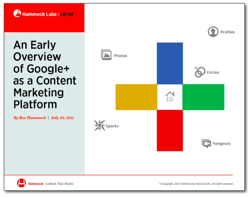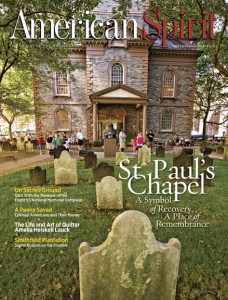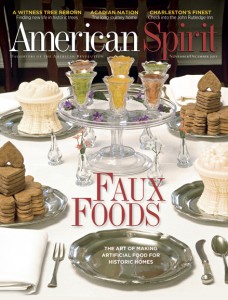


The eye-catching cover girl for American Spirit’s March/April issue might surprise you — it’s a young Martha Washington! Is this really what the very first first lady looked like in her 20s?
Although it’s impossible to know for sure, the painting is a very educated guess at what Martha looked like as a young woman. Michael Deas painted the portrait based on a computer-generated image created by forensic anthropologists at Louisiana State University’s FACES (Forensic Anthropology and Computer Enhancement Services) Lab.
Starting with the bone structure from a miniature painted of Martha in middle age, anthropologists used age regression techniques to simulate how she would have looked decades earlier. The cover story in the magazine’s Women’s History Month edition examines her vital role of morale booster at Valley Forge and other Revolutionary War encampments.
 Last July, Hammock Labs issued a brief ebook (we called it an “ebrief”) that reviewed and analyzed Google Plus. We were intrigued enough by Google’s brand new service that we broke our rule of giving a new service and platform a break-in period before suggesting any client use it.
Last July, Hammock Labs issued a brief ebook (we called it an “ebrief”) that reviewed and analyzed Google Plus. We were intrigued enough by Google’s brand new service that we broke our rule of giving a new service and platform a break-in period before suggesting any client use it.
When first launched, Google Plus was not open to company pages, so we suggested individuals log on with their Google accounts and try it out.
If you’re behind on your American Spirit homework, here’s a quick recap of the latest three issues of the magazine Hammock publishes for the Daughters of the American Revolution.
 The nation commemorated the tenth anniversary of the 9/11 anniversary with solemnity and remembrance, and American Spirit paid tribute with unique stories of the sites identified with the New York, Washington, D.C., and Shanksville, Pa., tragedies. The cover of September/October 2011 issue spotlighted St. Paul’s Chapel, a pre-Revolutionary War church in the shadows of Lower Manhattan skyscrapers. Many readers know of it as a place of healing and the epicenter for volunteers following the attack on the World Trade Centers, but few know that it functioned as a symbol of recovery as far back as 1776.
The nation commemorated the tenth anniversary of the 9/11 anniversary with solemnity and remembrance, and American Spirit paid tribute with unique stories of the sites identified with the New York, Washington, D.C., and Shanksville, Pa., tragedies. The cover of September/October 2011 issue spotlighted St. Paul’s Chapel, a pre-Revolutionary War church in the shadows of Lower Manhattan skyscrapers. Many readers know of it as a place of healing and the epicenter for volunteers following the attack on the World Trade Centers, but few know that it functioned as a symbol of recovery as far back as 1776.
 Holidays in the 18th century meant days of cooking, baking, roasting and stewing for the lavish feasts ahead. Tarts, candied orange peel and a frosted cake are a few of the holiday dessert dishes you might have been served by a well-off 18th-century hostess. Today, those early American feasts have been recreated in many historic homes and museums—from Philadelphia to Charleston. But just like the desserts on our November/December 2011 cover, they can’t be eaten.
Holidays in the 18th century meant days of cooking, baking, roasting and stewing for the lavish feasts ahead. Tarts, candied orange peel and a frosted cake are a few of the holiday dessert dishes you might have been served by a well-off 18th-century hostess. Today, those early American feasts have been recreated in many historic homes and museums—from Philadelphia to Charleston. But just like the desserts on our November/December 2011 cover, they can’t be eaten.